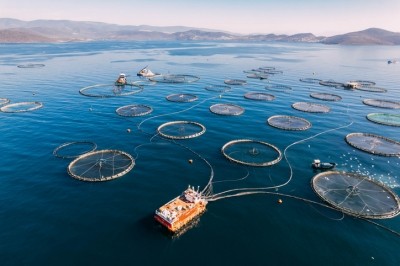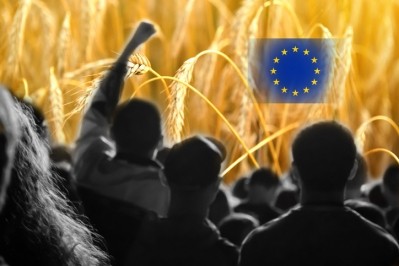How to reduce EU dependency on imported feed proteins

Key suggestions include expanding financial support under the Common Agricultural Policy (CAP) to encourage the cultivation of legumes and oilseeds like soybeans, rapeseed, and sunflower. The study also emphasizes improving crop insurance and investing in better infrastructure and supply chains.
The EU’s production of protein-rich plants - oilseeds and dry pulses - is forecast to be at 7.2 million tons of crude protein in 2023-24, which represents a significant growth of 28% over the last 15 years. But, for oilseeds meals, the EU only produces 27% of what it needs to feed its livestock sector.
An increase in diversification of production in the EU requires available agricultural land. Critically, the study shows that replacing 50% of soybean-equivalent imports would mean swapping 6.6 million hectares of other crops.
Coupled support
This report suggests significantly increasing coupled support for EU production of plant proteins, and to encourage farmers to grow more of them, as long as it doesn't violate any international agreements.
Currently, the EU only supports the cultivation of oilseeds like soybeans, rapeseed, and sunflower on 1 million hectares. However, this support could theoretically be expanded to cover up to 7.8 million hectares, the maximum allowed under the Blair House Agreement. If implemented, this would be a big step towards reducing the EU's dependence on imported oilseeds, reads the review.
The livestock sectors are not equivalent in terms of import needs, with the pig and poultry meat sectors most dependent on soybean meals imports. Ruminants rely more on fodder even if some concentrates are supplied.
The study envisages an ideal scenario whereby the quality and/or the share of proteins in the forage/roughage ration of ruminants would increase via several strategies: integration of fodder legumes such as dried alfalfa, improved pastures, and grassland management, alongside an increase in the production of soybeans, sunflower, rapeseed, and pulses in the EU, mainly targeted at monogastrics.
National protein plans
National policies can significantly impact the protein crop sector, find the authors.
For example, the Netherlands has implemented herd size limitations, while several EU countries including Belgium, Denmark, Finland, France, Germany, and the Netherlands, have developed 'protein plans'.
These policies could also prioritize access to irrigation water for protein crops over other crops, like corn, in times of competition. The publication also recommends improving crop insurance for protein crops to mitigate risks for farmers. Currently, this kind of insurance is not widely used in the EU.

Crop diversification
More investment is needed across the entire supply chain – from farmers to processors – to support crop diversification. This includes building better storage facilities and processing machinery, which are still lacking in some areas, notes the study.
To improve the stability of prices, the authors recommend encouraging producer organizations to develop long-term agreements to ensure a steady supply of products and fair prices. This would involve linking the prices of competing crops, like soybeans and corn, and adjusting them according to local conditions.
The creation of platforms to connect fodder producers with animal breeders would be beneficial as well, they say.
Another effective strategy is to diversify and secure protein sources from close partners like Ukraine. While this approach wouldn't eliminate the EU's reliance on imported plant proteins, unless Ukraine joins the EU, it would reduce the risks associated with relying on a small number of suppliers and potential disruptions in international transportation.
'The feed manufacturer will include an alternative raw material in its formulation only when it is available long-term, in sufficient volume, with the required quality, and at an attractive price.'
Precision ag model
Apart from diversifying diets with EU-grown raw materials, there are many other strategies to diversify feed composition or at least reduce the need for protein-rich materials, whether imported or not, finds the report.
Some strategies have already been implemented in certain countries including the better characterization of livestock needs, at least by age, to avoid excessive supply of certain nutrients while ensuring good yield.
There is also an emphasis on better characterization of the nutritional values of raw materials used in rations, particularly forages.
The use of amino acids or enzymes in rations to optimize the use of nutrients from domestic protein sources or to reduce the need for some raw materials such as soybean meal is another area of interest. However, the heavy dependence of the EU livestock sector on imports of amino acids, particularly from China, remains a concern, note the authors.
Furthermore, the selection of more robust animal species, especially monogastric species that are less sensitive to anti-nutritional factors and more adapted to diversified diets, is being pursued.
EU policy improvements to encourage greater domestic protein production could include:
- A feed additive regulation that fosters stability and innovation in feed additives.
- Novel food legislation that simplifies and accelerates authorization processes.
- Waste directives that expand the types of biodegradable waste permissible as animal feed.
- Renewable energy directives that ensure long-term stable regulation for biofuel production.
- Regulations on new genomic techniques.
- CAP rules that incentivize the production of protein-rich crops, grasslands, and legumes.













